Los Santos de Nigua
Photos by: Dalí Magique
Story & Captions by: Ana-Maurine Lara
Web Design by: Rachael Sol Lee
Soy bienvenido – oy
San Antonio Dios Hijo
Aho yo vengo
Alabando aquel amigo
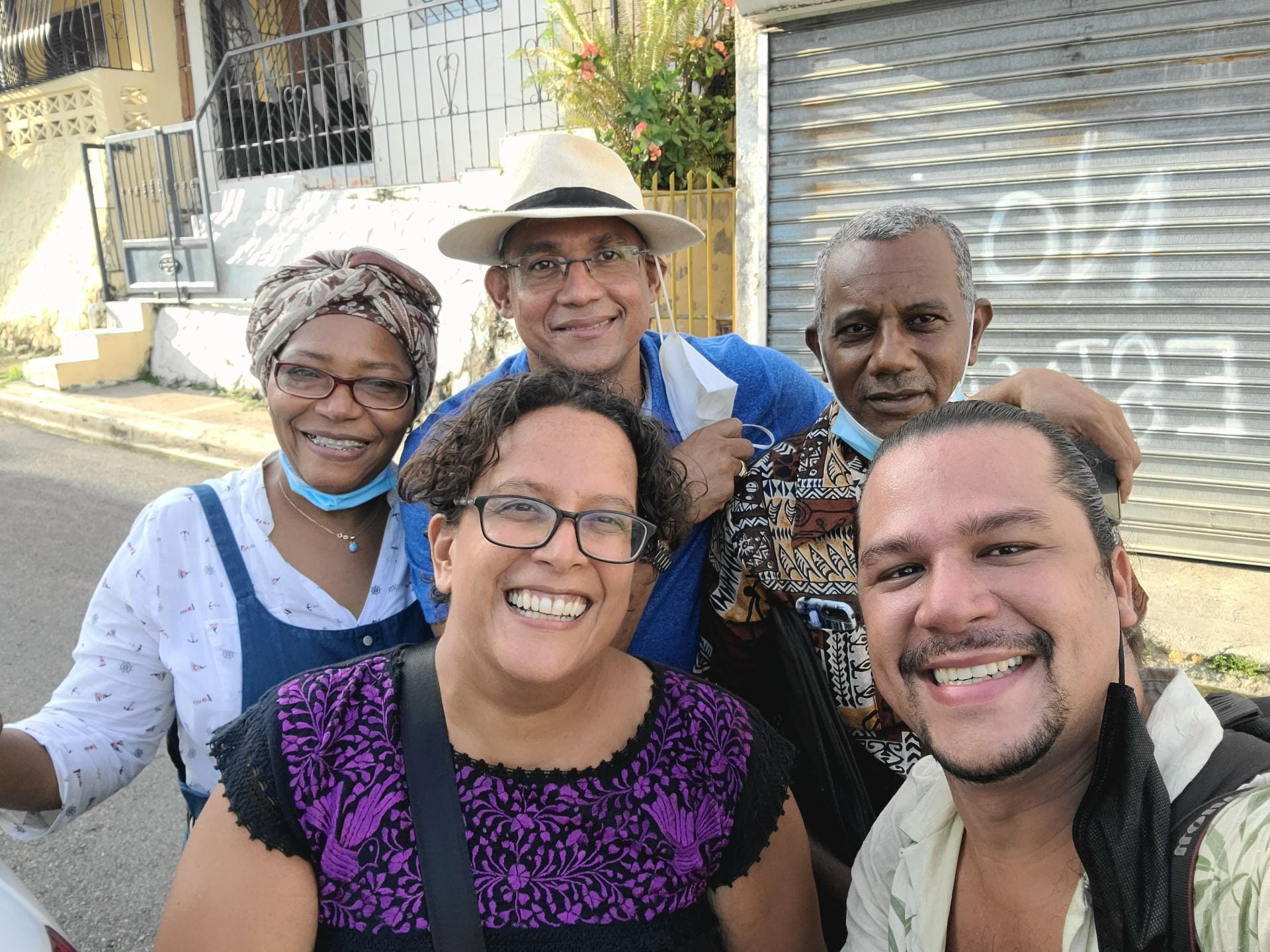
Ana-Maurine Lara, Wanda Marianela Calzado Rodriguez, Edwin Aristy, Nelson Rivera, Dalí Magique (from front center going clockwise)
The Research Team
It was a beautiful sunny day in October when we picked up Nelson, director of the Festival de Atabales so that he would accompany us to meet several servidores in San Cristobal, near the Cañada de San Andres where a church is dedicated to San Antonio. The tradition keepers of this area include Graciela and Ramoncito, who we had the fortune to visit with and interview as we made our way across the spiritual geography of this historical maroon community.
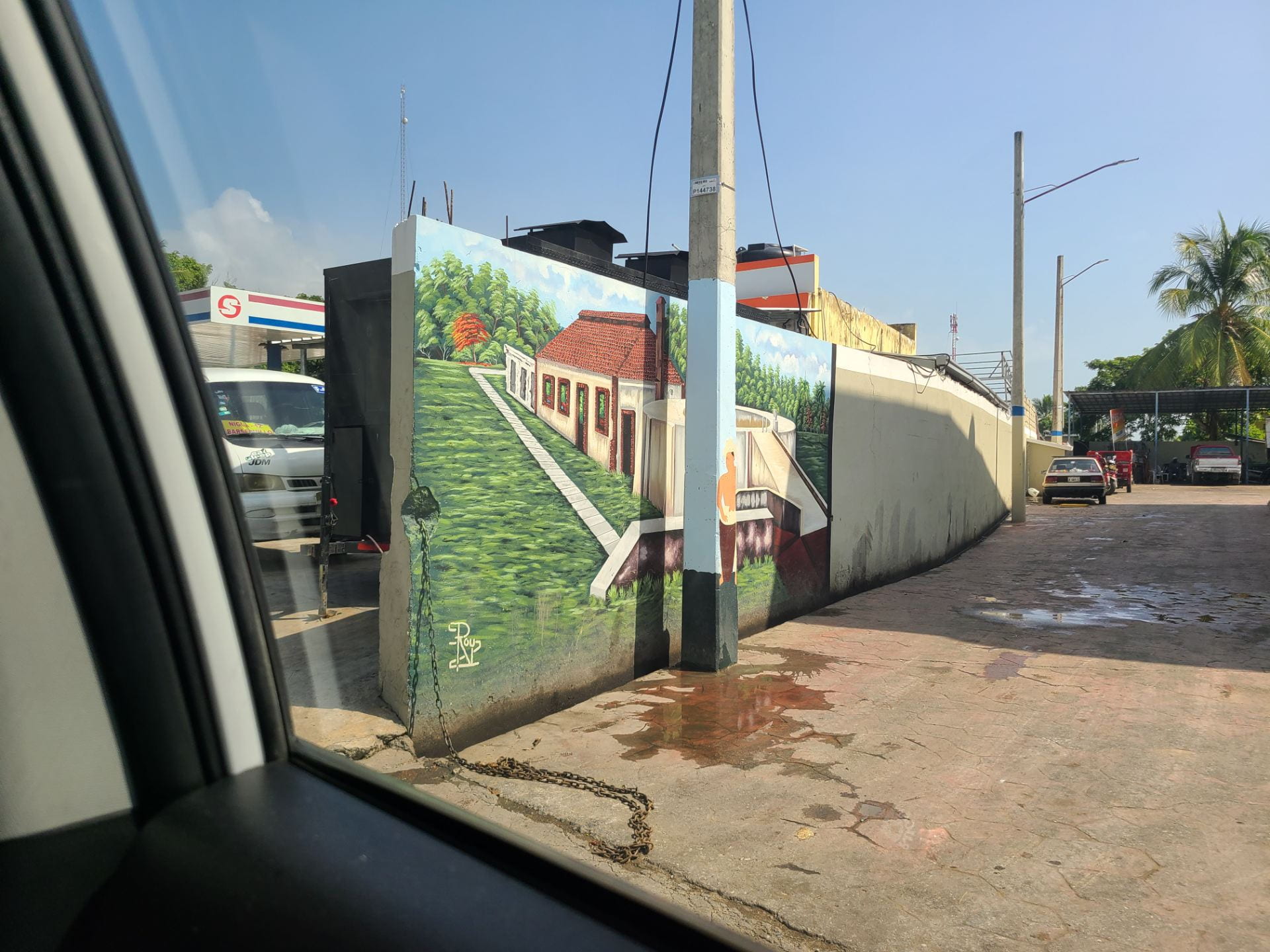

Graciela
We started by visiting Graciela, community elder and head of lineage. As we entered her courtyard and altar we were met by the painting of San Antonio, commissioned and painted for her by one of her community members, as well as images of the Virgen de Altagracia, the peoples’ devotion.

A painting of San Antonio on Graciela’s wall.

A lithograph of the Virgen de Altagracia.
To the left of the images was a photo of Graciela – from 20 years ago – where she is dressed in the garbs of San Antonio, in preparation for one of her famous romerios (pilgrimages), a promise she fulfilled for 60 years before her health no longer permitted her to continue. Under her image, there is a framed copy of a certificate recognizing her work, issued in 2006 by the national Cultural Center for Art & Folklore – a sign post of her importance to the community and to the efforts of tradition keepers to legitimize their practices.

Graciela’s photo and certificate next to a lithograph of Jesus.
Graciela is in her late 80s, and is no longer physically or cognitively able to carry out most of her duties. She tells us, now, it’s the community that ensures that the altar is cared for, that the candles are lit, that San Antonio is venerated.

Graciela sits in her rocking chair.
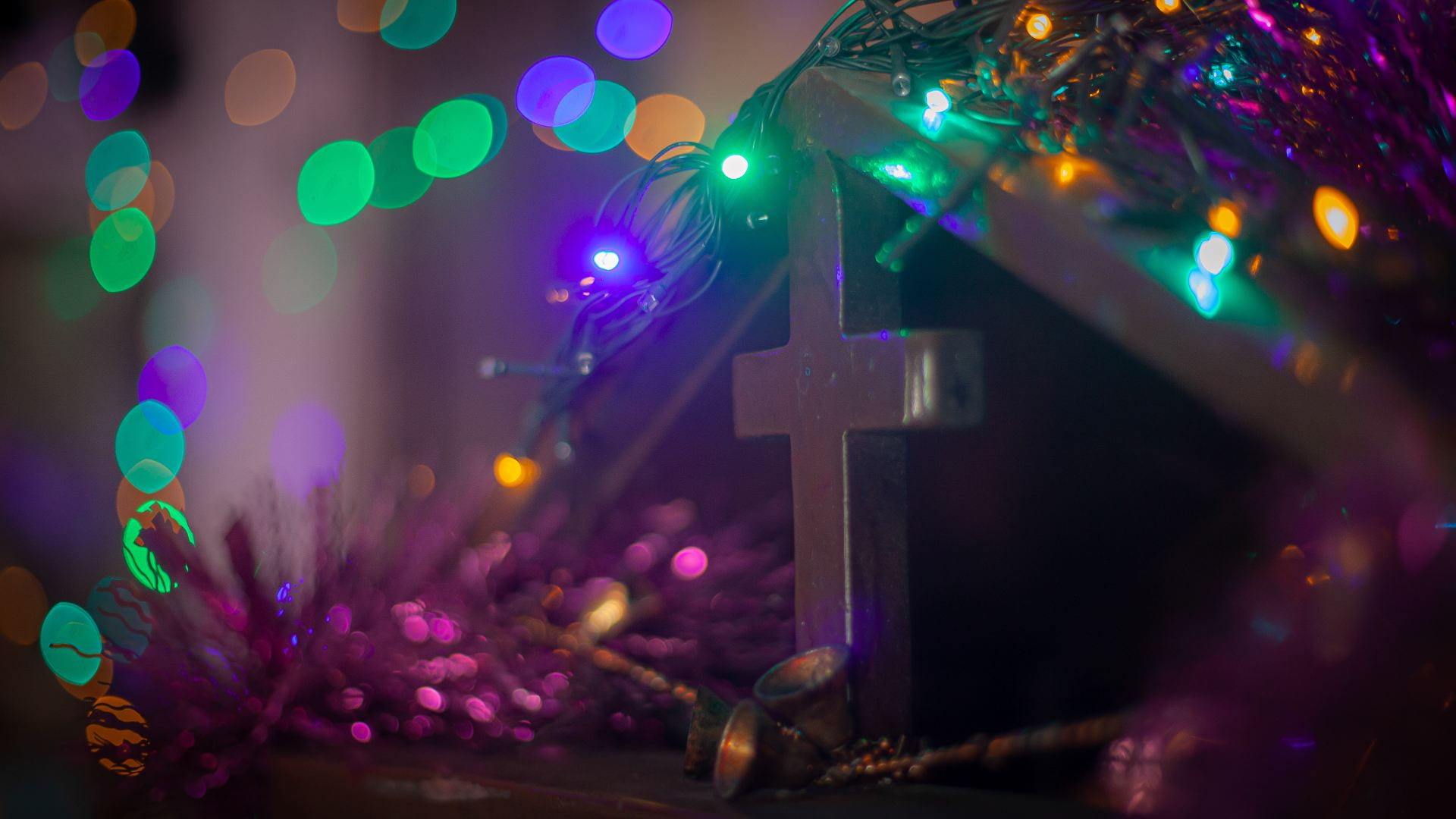
A decorated cross on the altar.
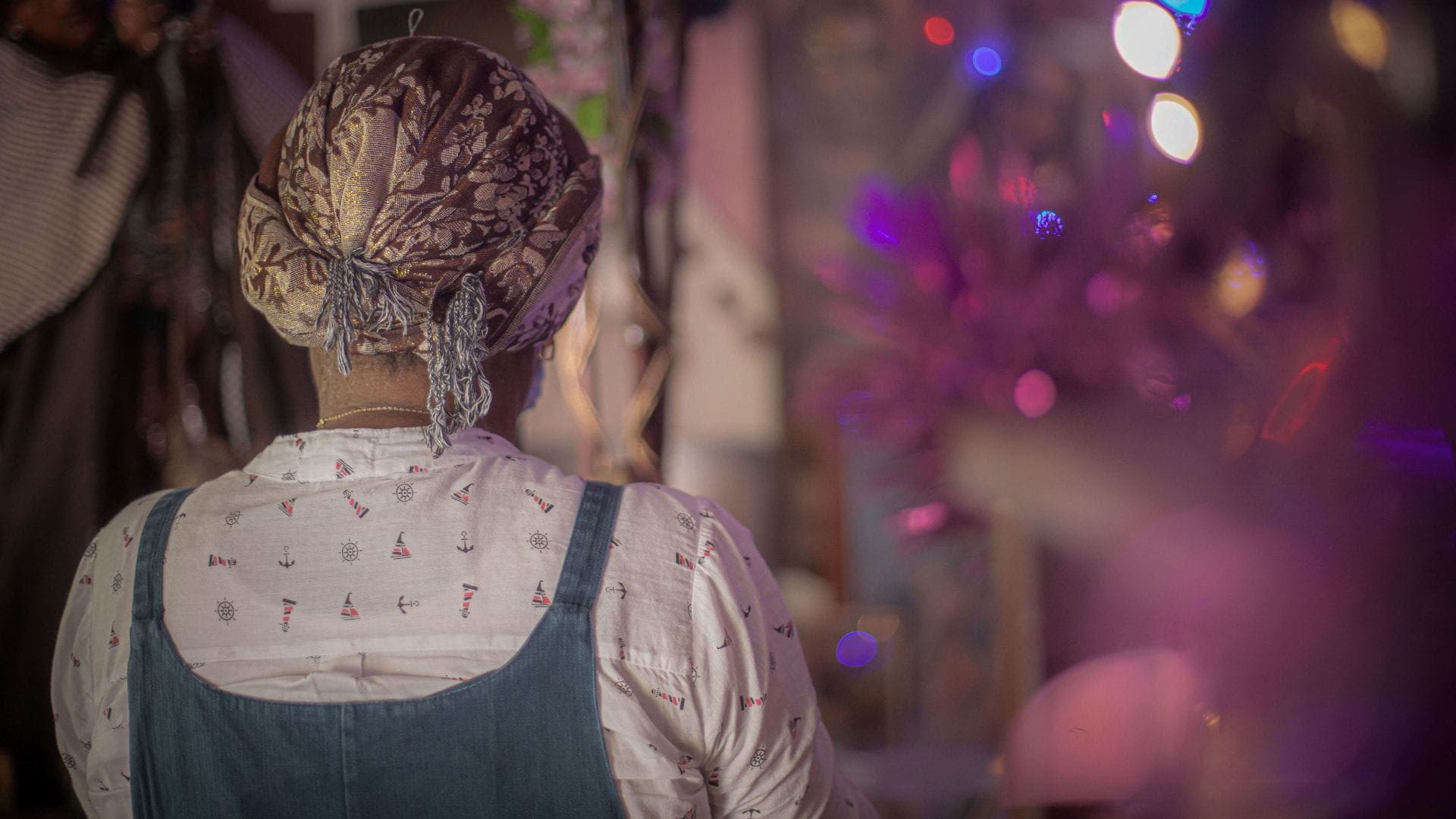
Presenting ourselves to the altar.
Her altar is dressed for San Antonio, who is celebrated on the first Tuesday of each month and in his annual celebration – for Graciela – at the end of each October.
When we asked Graciela, “Who is San Antonio?” she sent us in to the altar room to find out.
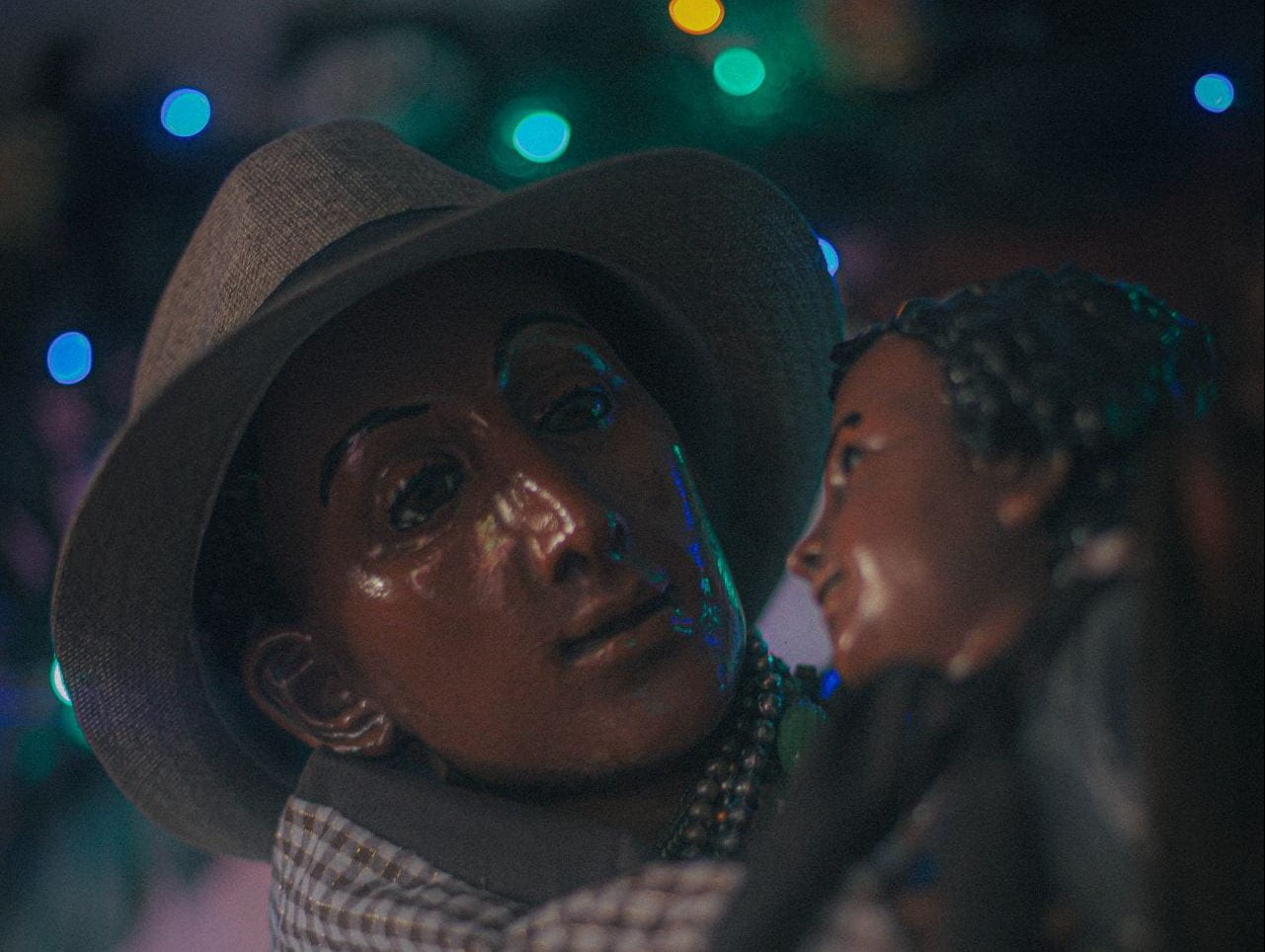
A figure of San Antonio.
Chimbe
On our way to Graciela, we had tried to visit with him, but he was packed – people were lined up outside of his altar room – and we were told to come back later in the day. We made our way back to Chimbe, who received us first as himself.
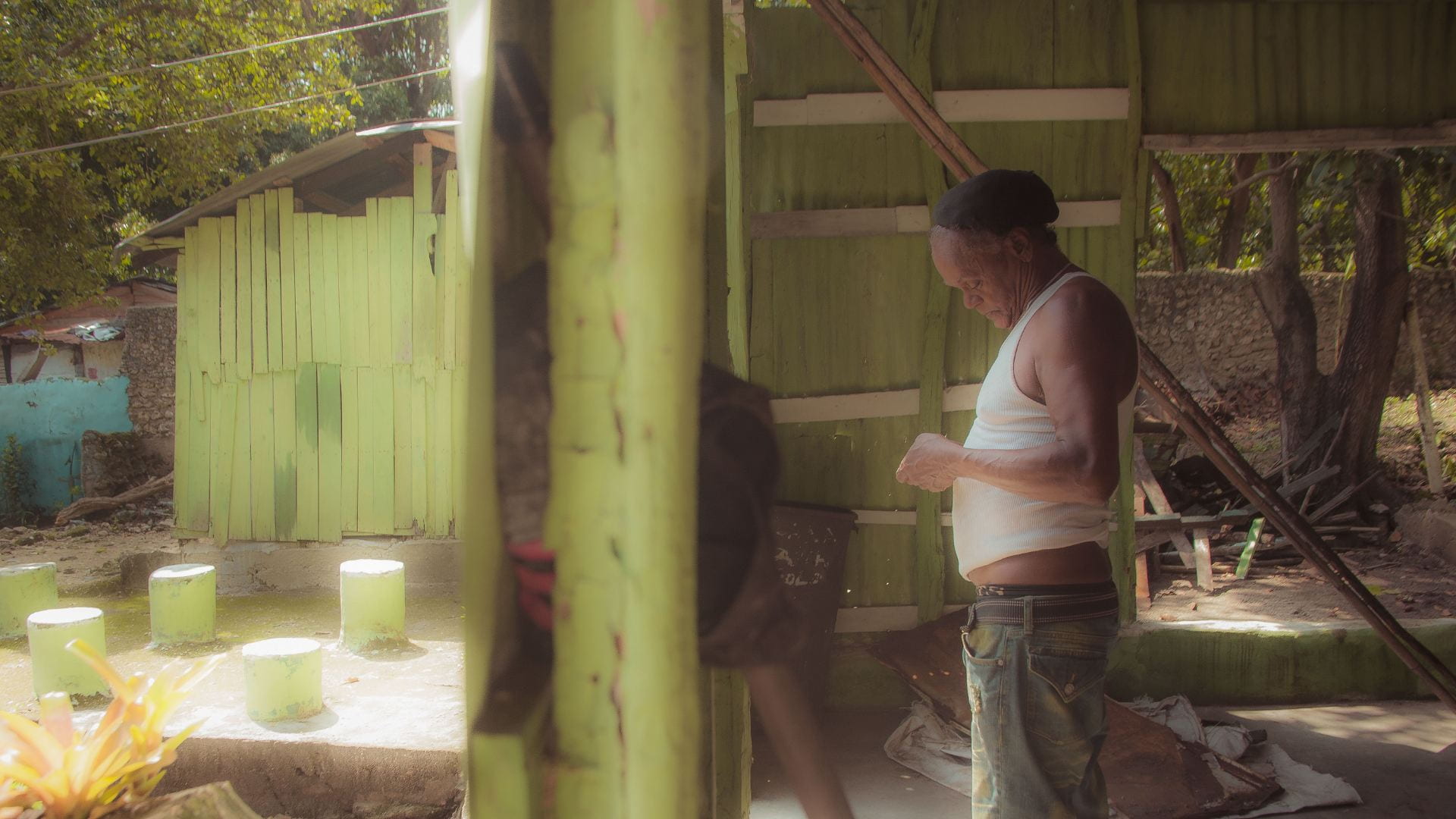
Chimbe stands in front of his ancestral altar, contemplating our time together.
Chimbe is a very well-known servidor, known most famously for his Anaisa, who rules over his home and spiritual center.
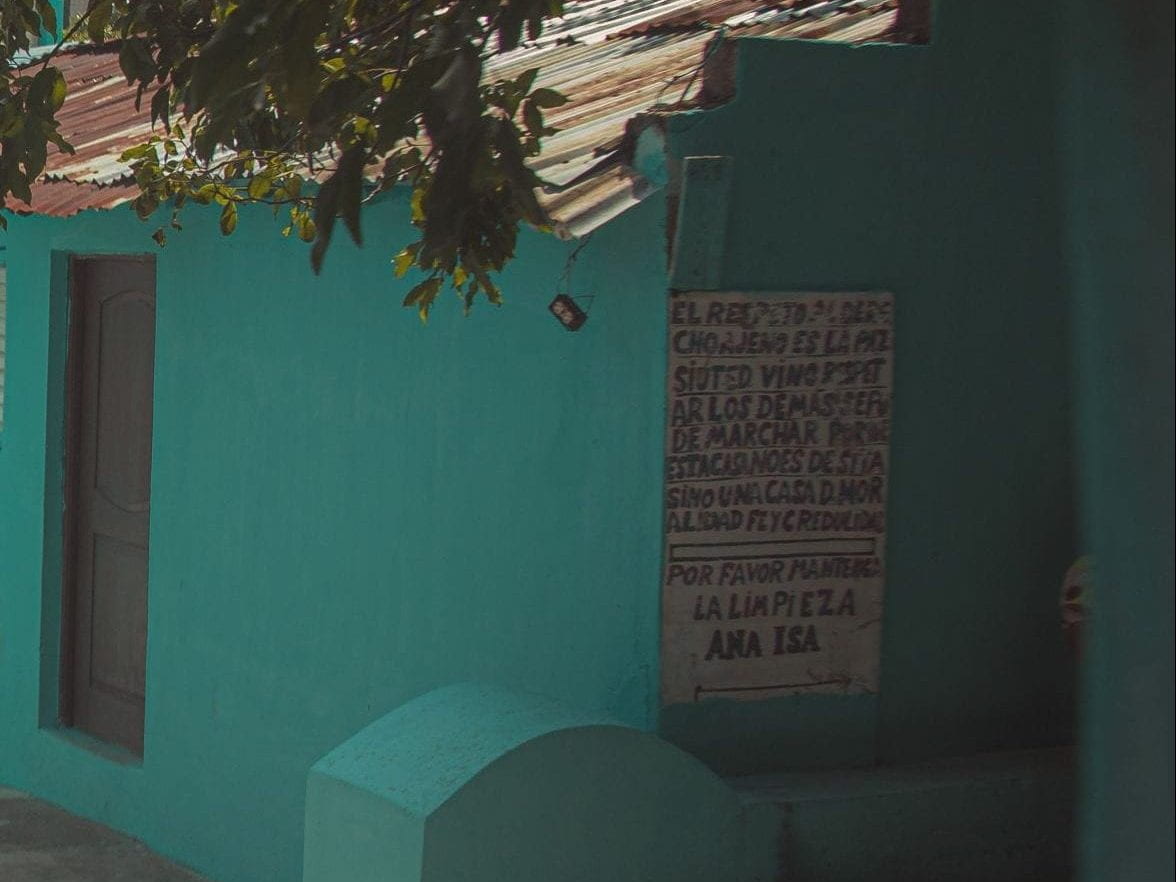
“A sign on Anaisa’s altar. It reads, “El respeto al derecho ajeno es la paz. Si usted no respetar los demas se puede marchar porque esta casa d’mor (amor), calidad, fe y credulidad. Por favor mantener la limpieza. Ana Isa.”
“Respecting other’s rights is peace. If you do not respect others, you can leave because this is a house of love, quality, faith and credibility. Please maintain cleanliness. Ana Isa.”
(Translated by Ana-Maurine Lara)
Chimbe explained that his home is a “centro espiritista” – a spiritual center – devoted to the 21 división and to the ancestors. I had met Chimbe in 1995, and now, 25 years later, it was amazing to see how his centro espiritista had grown from a one room Church, to an entire complex with over six separate altars, presented here.
The first altar we were presented to was the ancestor altar, decorated here with red fabric, and with the Catholic representations along the wall.
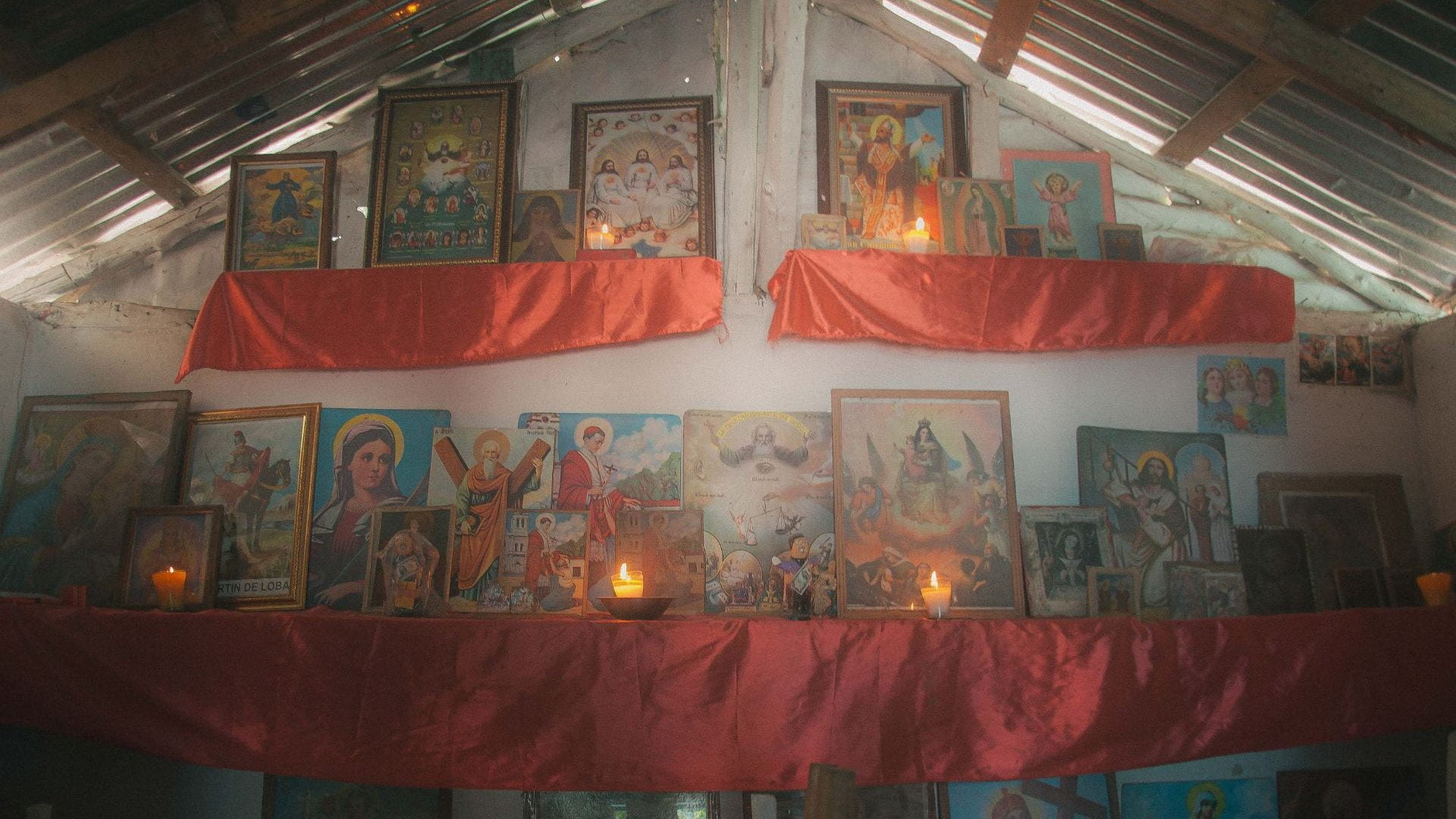
The altar arranged with the lithographs of Catholic saints, each representing a different entity and energy that moves through the space.
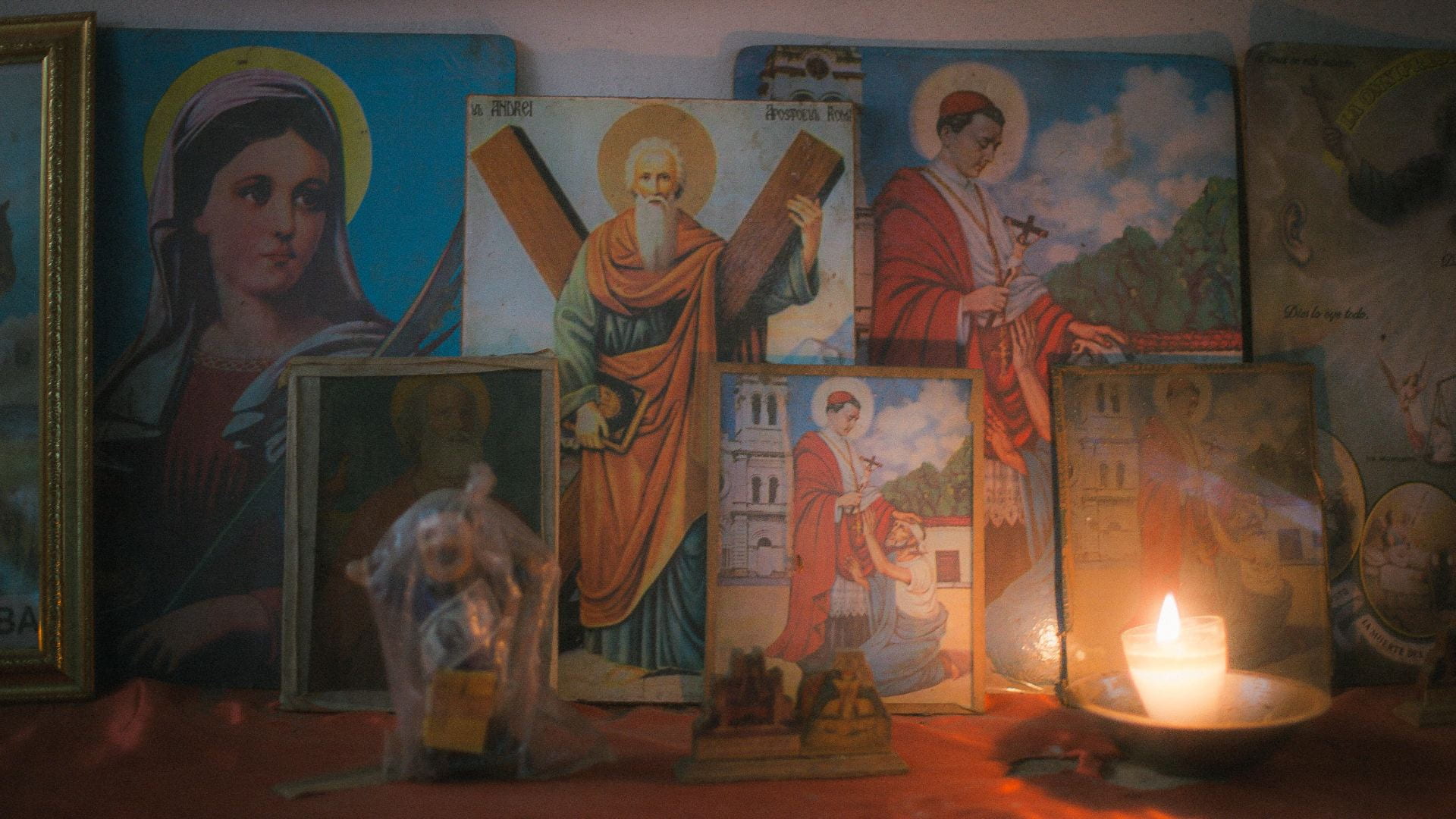
Close up of the ancestor altar.
We were then presented to the guede altar, the altar dedicated to the spirits and mysteries of the dead.
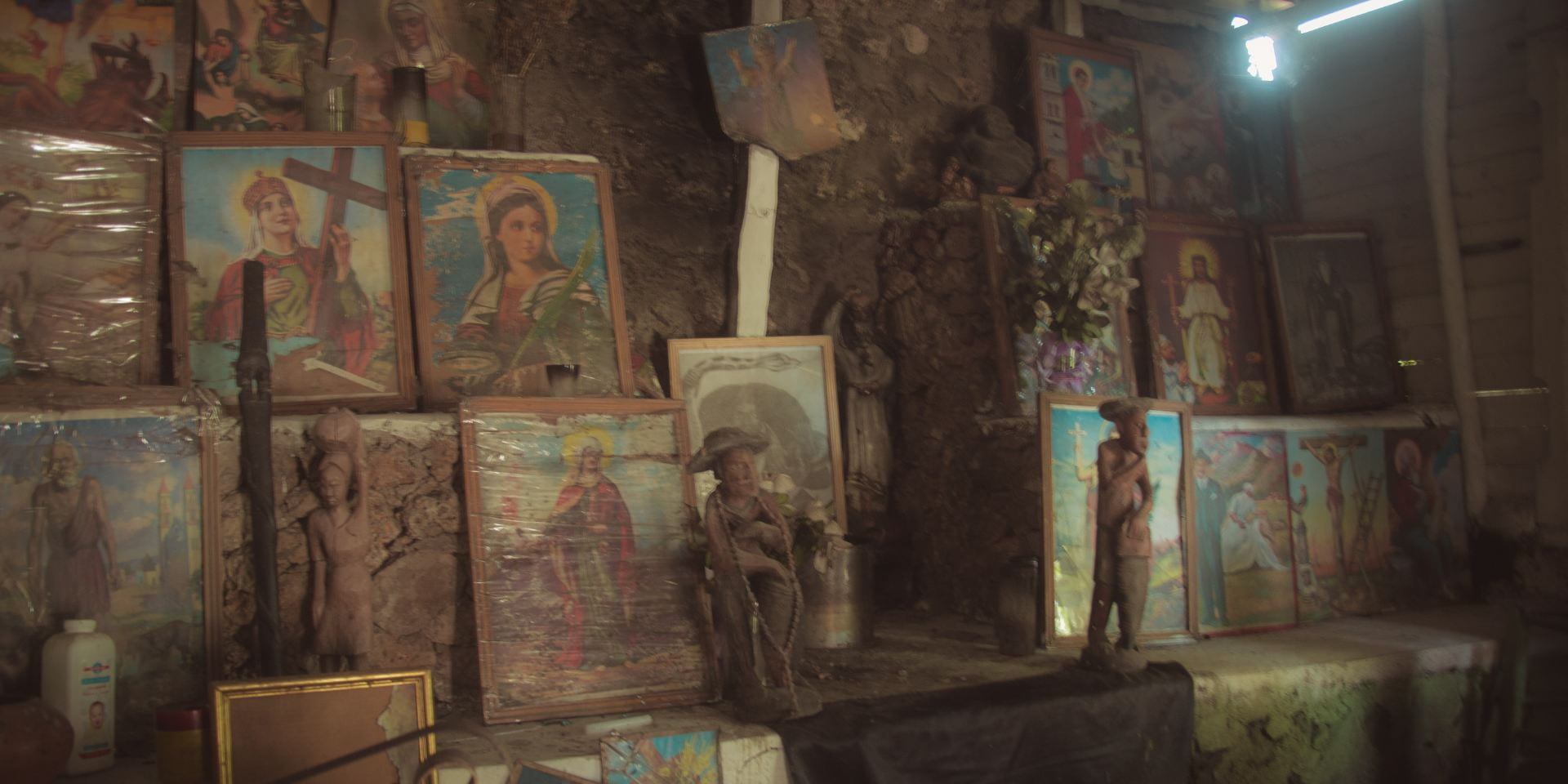
The altar to the dead, which includes lithographs and statues representing the spirits of the elevated dead.
The altar de los indios was to the left of the ancestral altar, holding space for the indigenous lineages of the 21 division, which live “in water.”

An altar to the “indios” including numerous representations related to the specific misterios.
We continued to the altar to the 21 division, which was set up to San Miguel, Metresili, Anaisa and Ogun Balenyo. There, Chimbe introduced his ethics and ways of working.
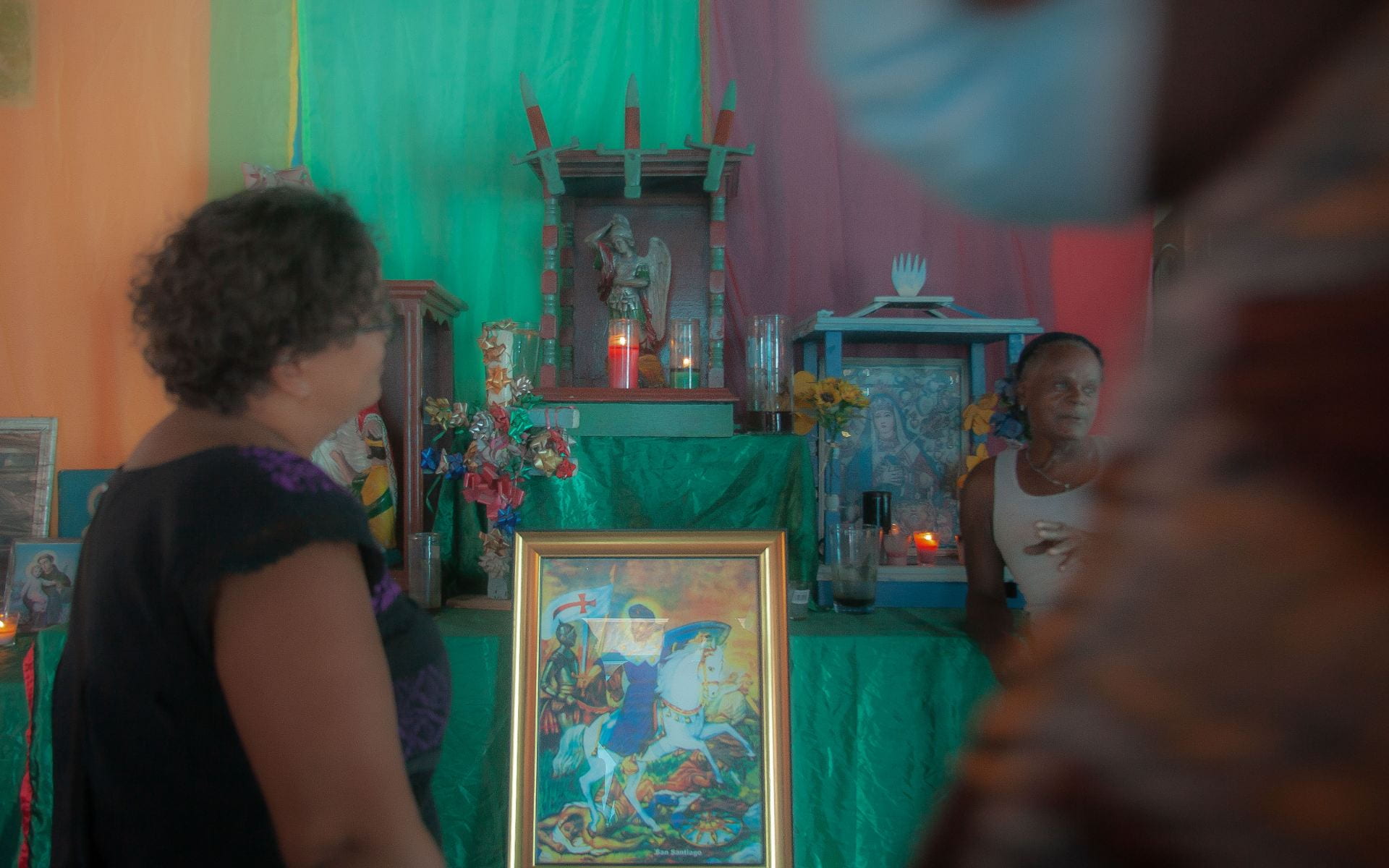
Chimbe and the research team stand in front of Chimbe’s altar.
It was there that we were asked to wait, as Chimbe prepared to welcome Anaisa to receive us within her inner sanctuary.
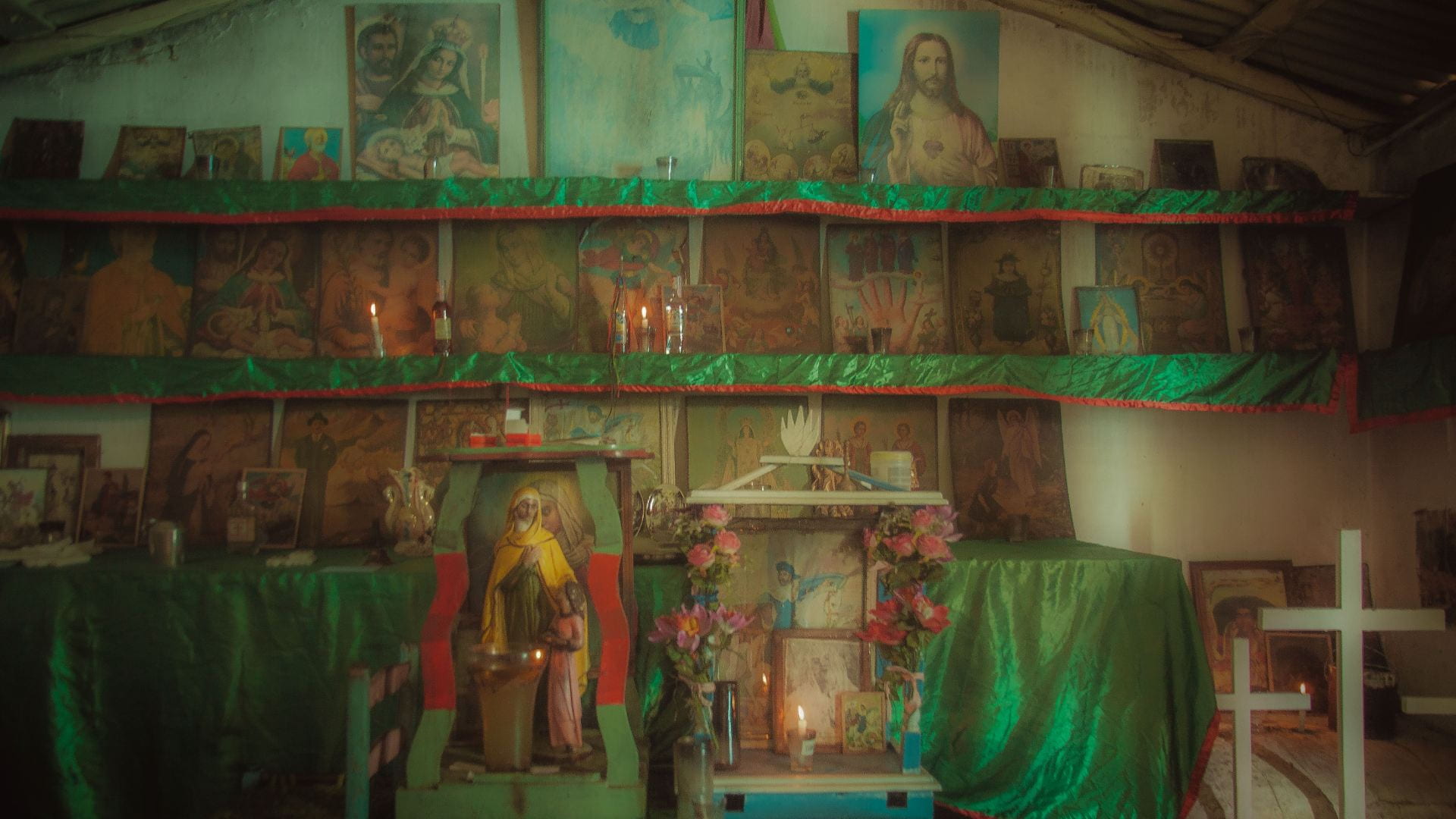
The altar to Anaisa, dressed for the celebrations to San Miguel.
Anaisa came with the lighting of her candle, the ringing of her bell. She received us and gave us an interview.
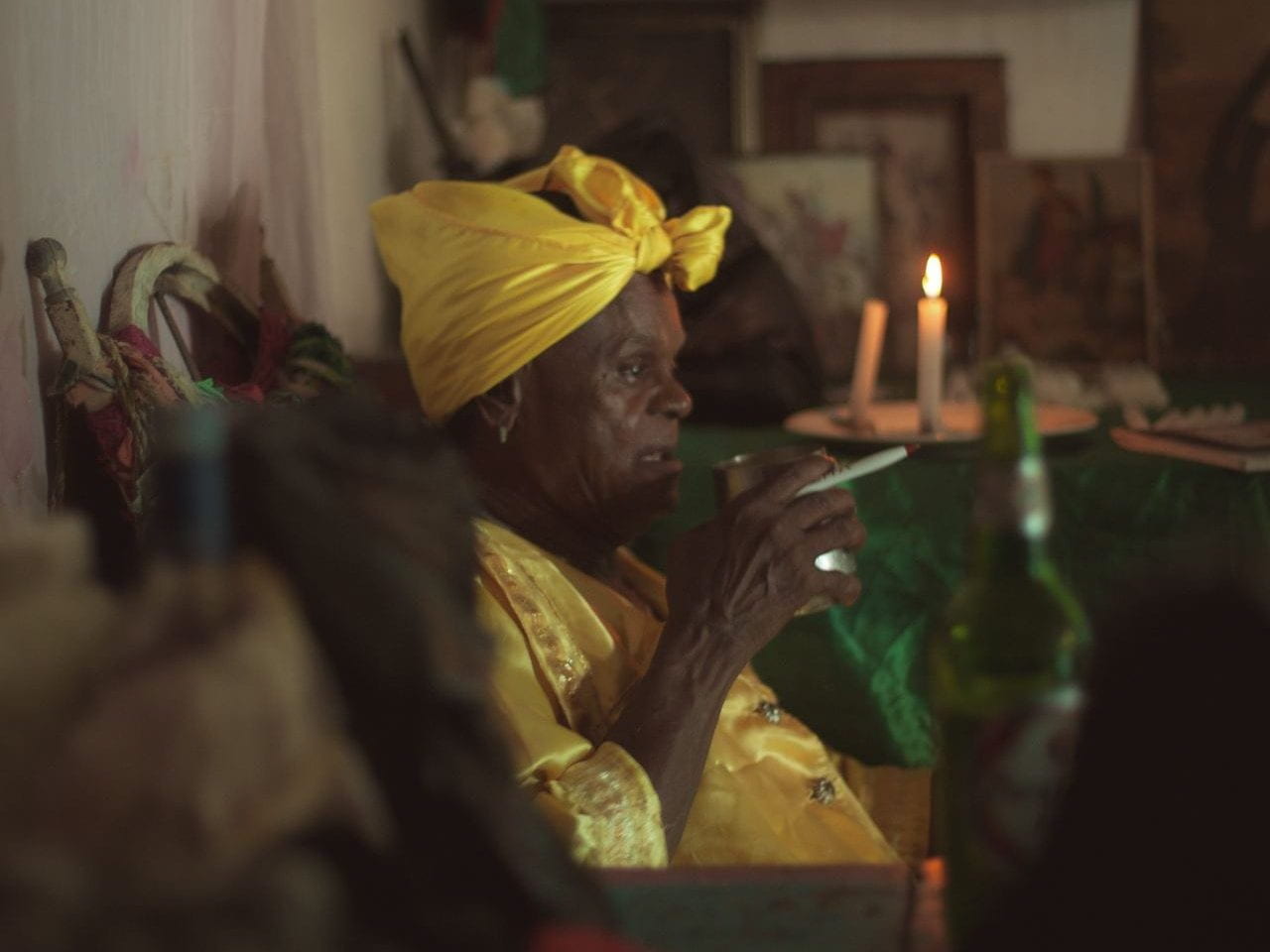
Anaisa in the body of Chimbe.
Ramoncito
From Chimbi’s house, we went to Graciela’s godchild’s altar. Ramoncito is a beloved servidor in San Cristobal, most famously known for his celebrations of San Antonio. He had just had a rezo the night before when we arrived. His altar was dressed for celebration.
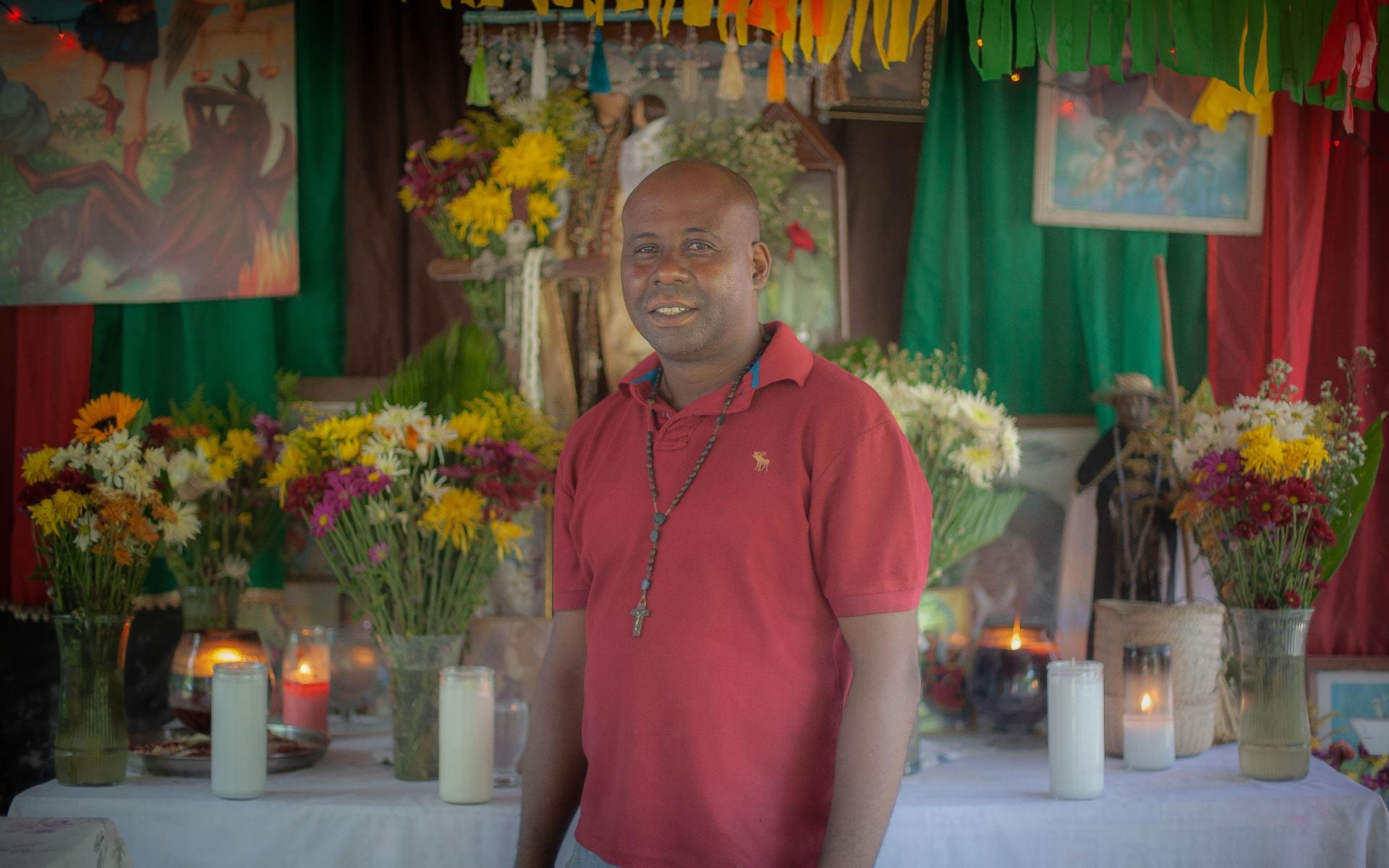
Ramoncito stands in front of his dressed and celebrated altar.
Ramoncito’s home – a large open space swept clean of leaves and planted with sacred plants – is a place of peace. We walked around, taking in all of the beautiful light and soft breeze passing through.
We thanked Ramoncito, who invited us to his fiesta that coming Saturday.
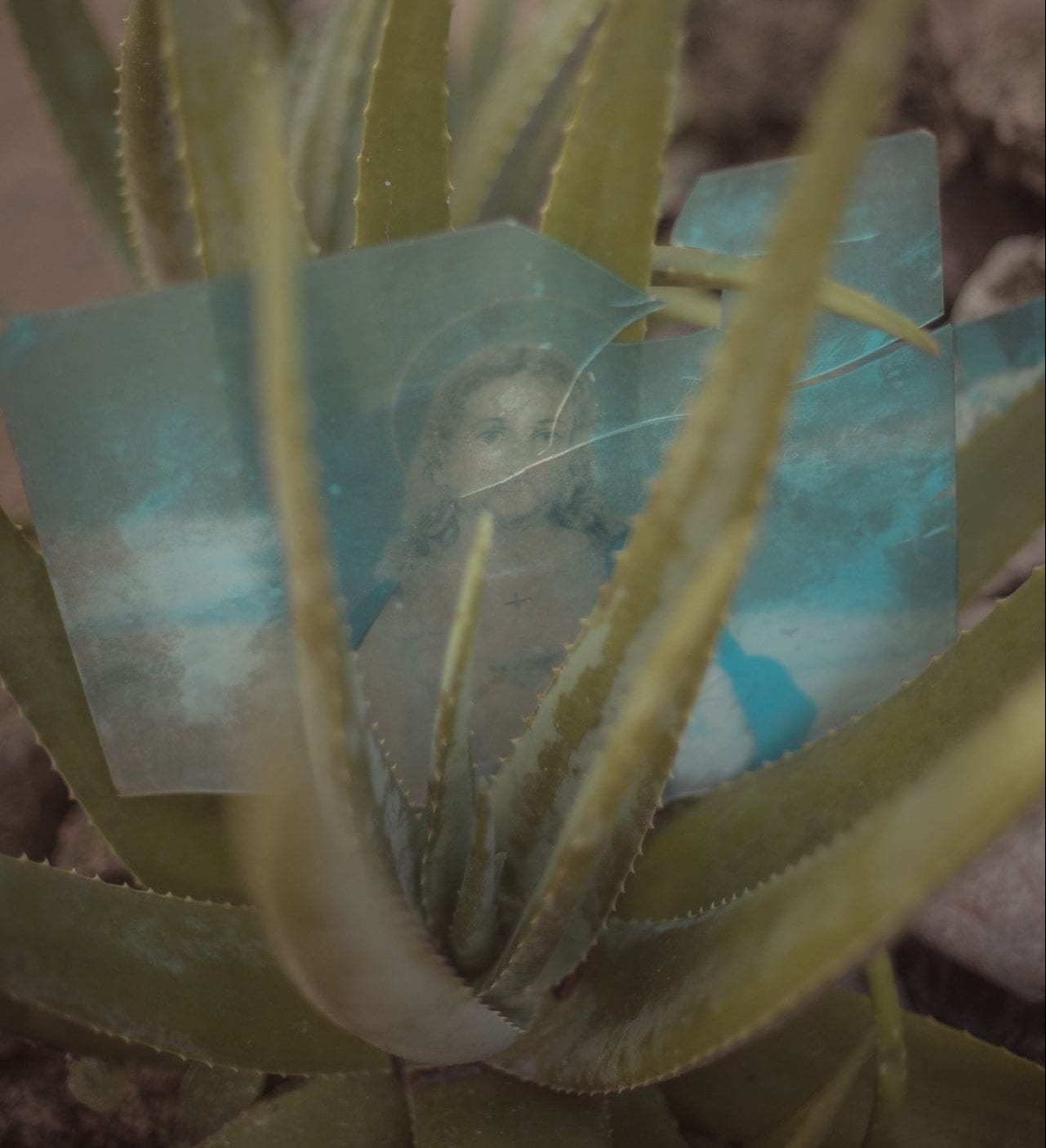
An aloe plant consecrated to Jesus.
Freddie
We then made our way to Freddie’s house. I had already been present to Freddie’s beautiful prayers on other occasions. To visit with him in his altar as he readied himself for upcoming celebrations was an honor and a privilege.
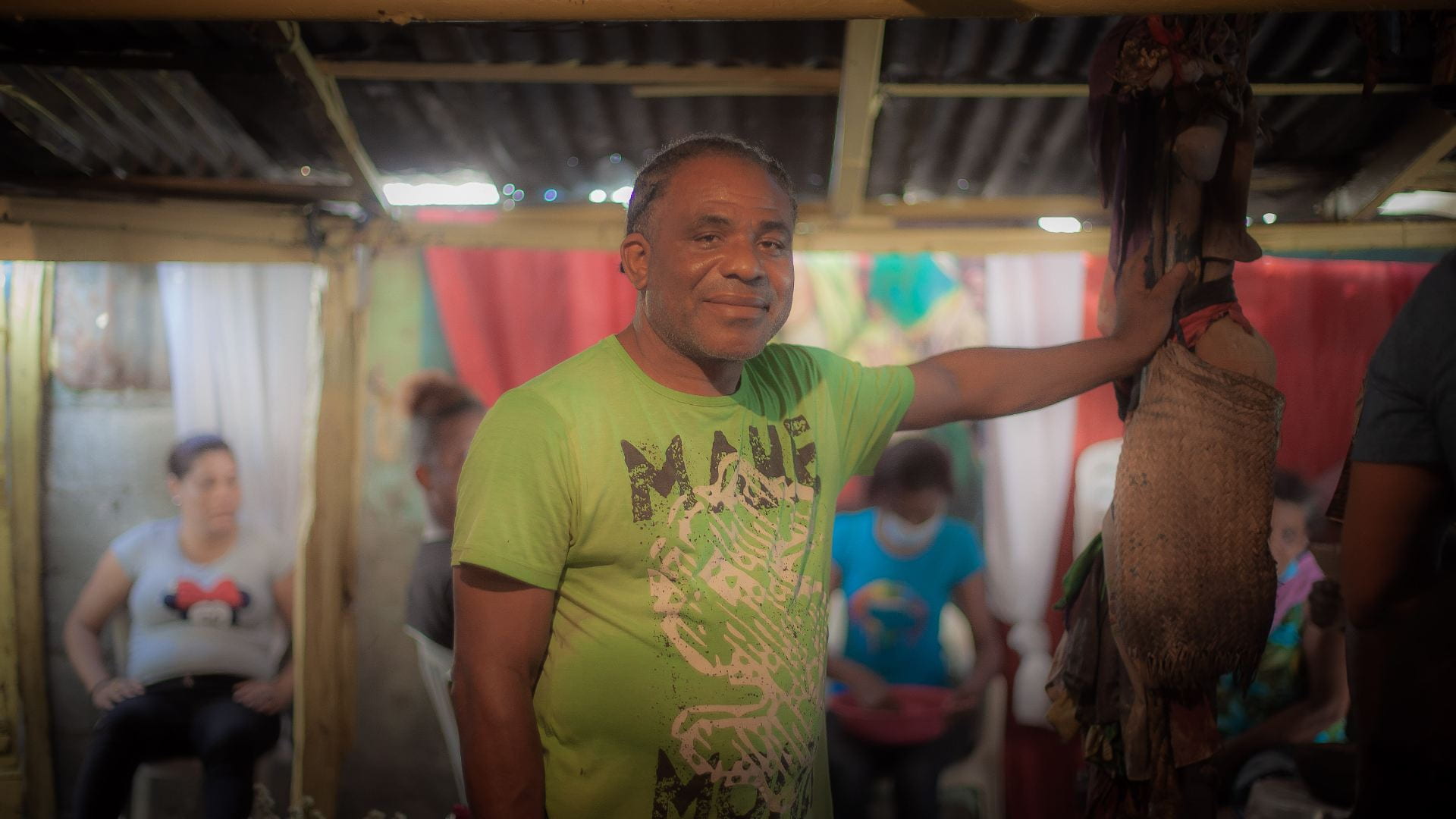
Freddie stands in the center of his altar, his godchildren patiently observing us from the background.
His statues to the misterios were so powerful, beautiful and striking. We share some of them here, starting with the statue of San Miguel, conquerer of all evil.
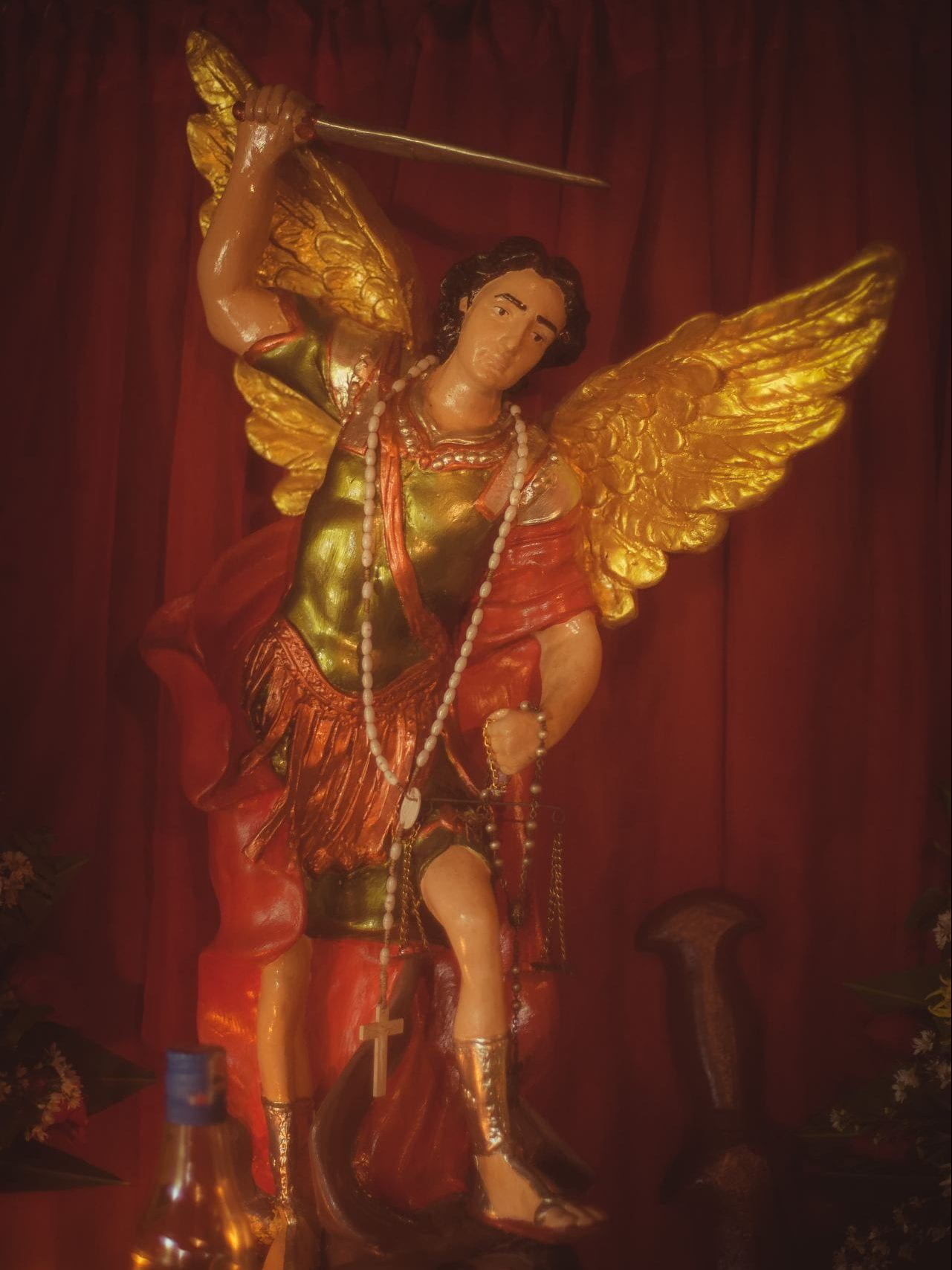
San Miguel
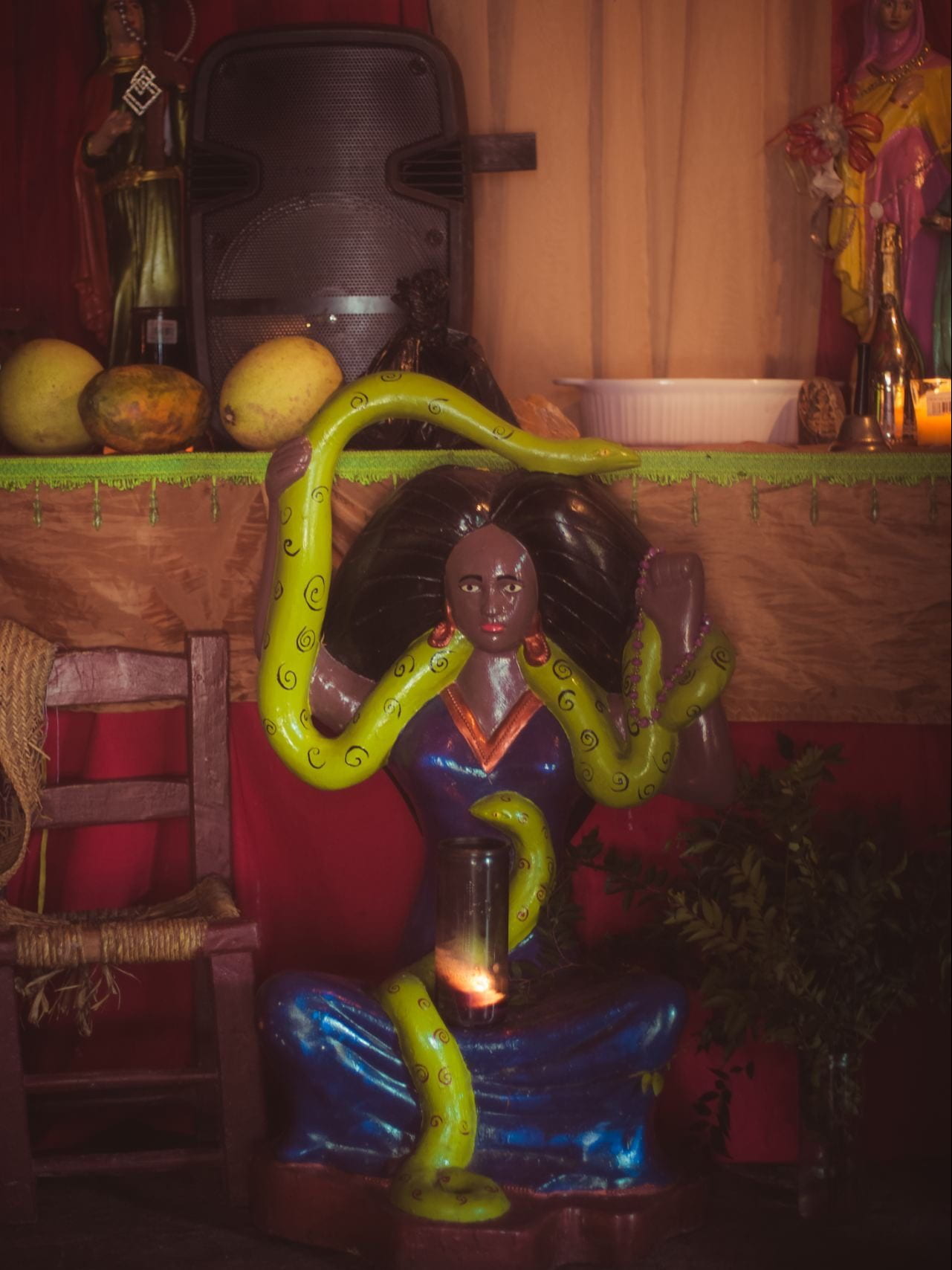
Santa Marta Lubana, conquerer and dominator of all difficulties.
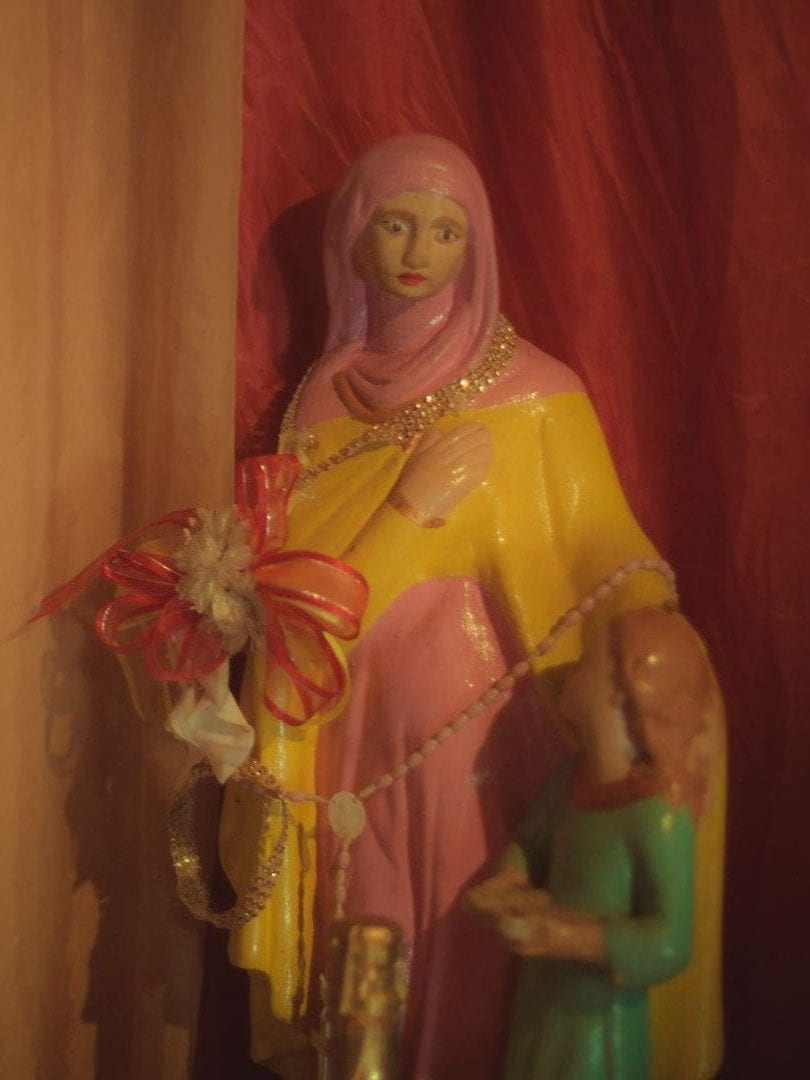
Anaisa, the sweetness of light on water, the misterio of love and joy, stood in the corner, looking over her children.
Our journey that day was full – of flowers and perfume, beauty and loving conversation. After having received the blessings of San Antonio, Anaisa, and San Miguel, we were ready to go home.
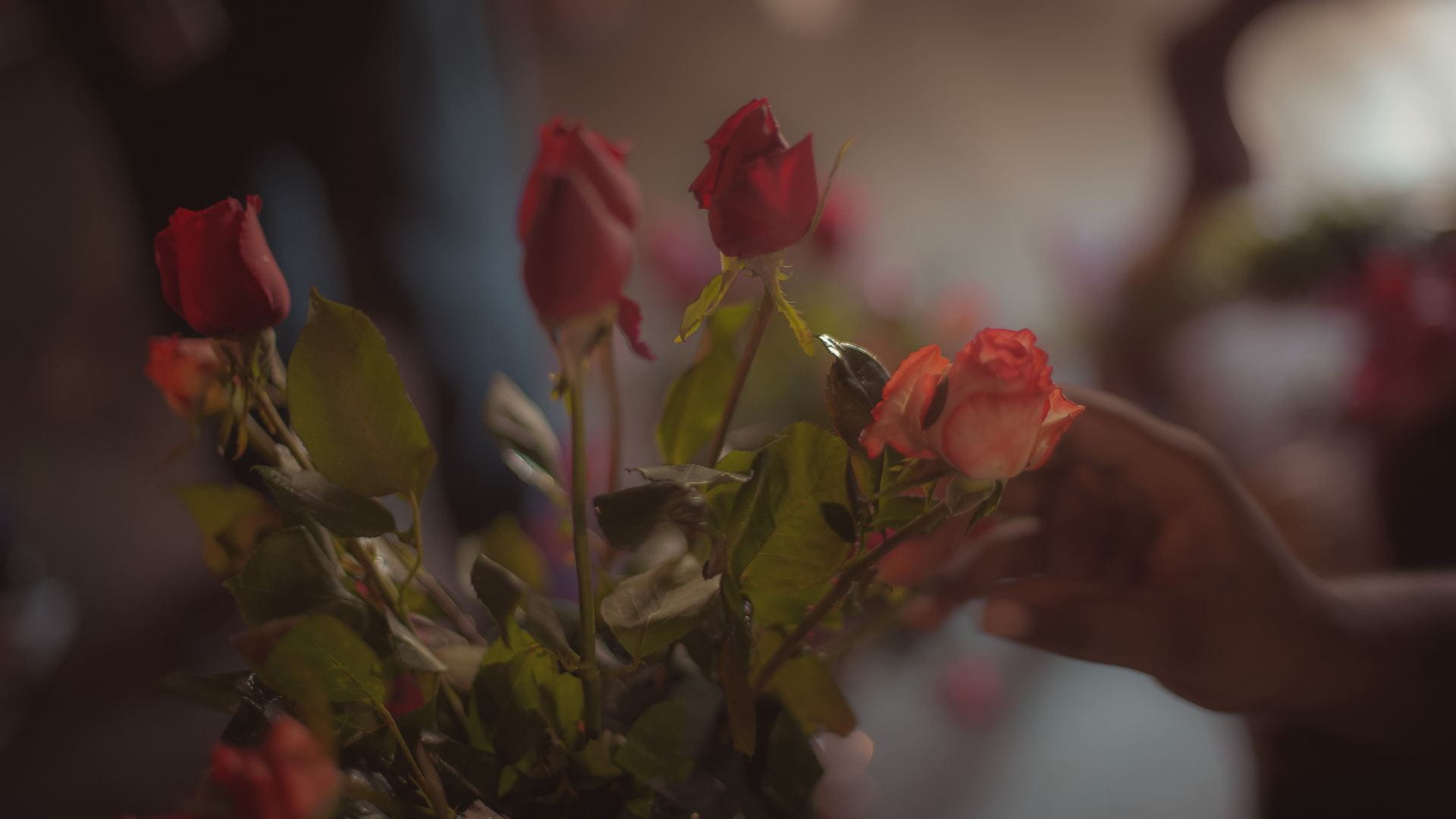
Roses for the misterios.
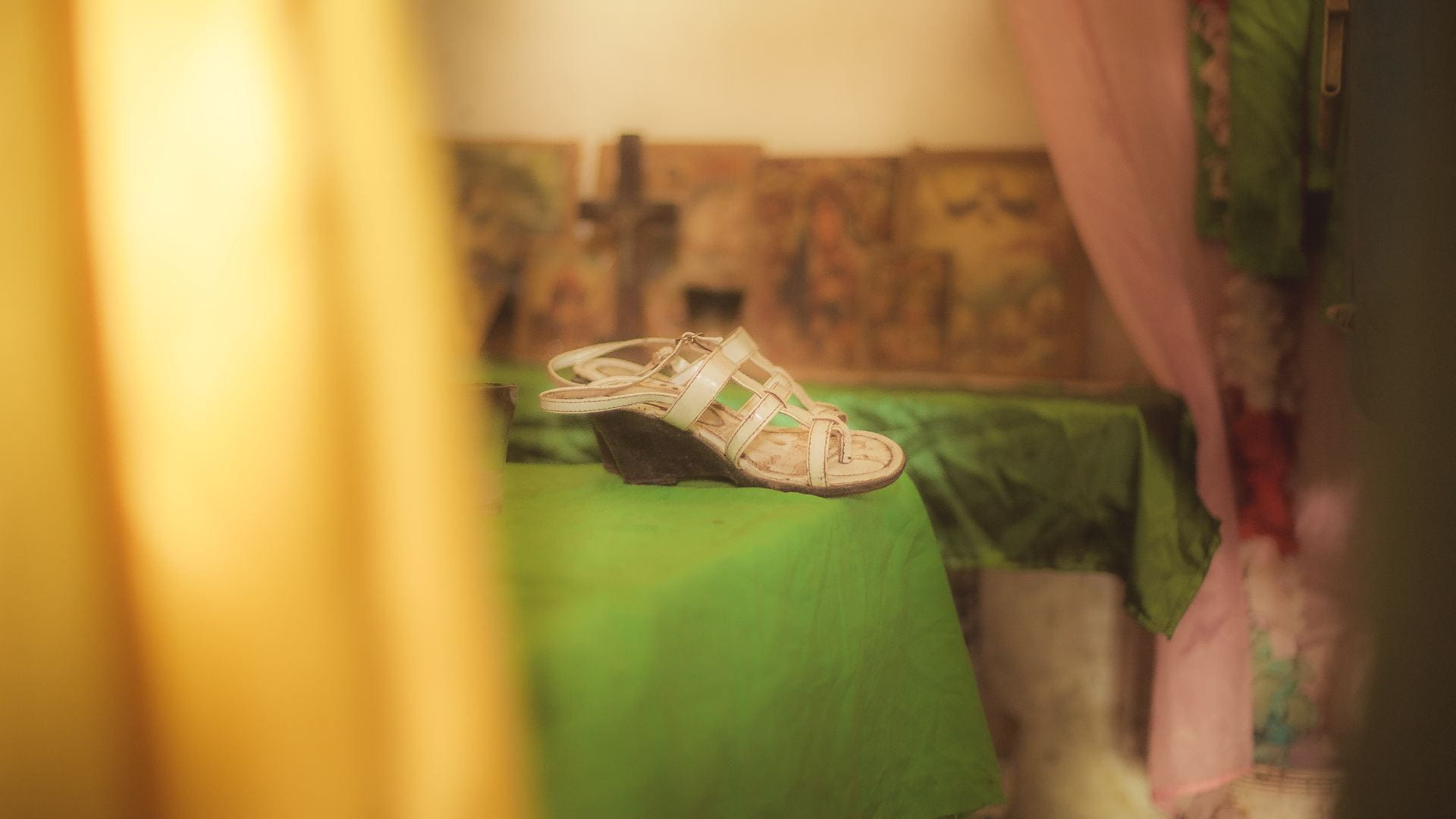
Shoes for Anaisa.
UO Libraries| Digital Scholarship Center
This work is In Copyright-Educational Use Permitted.
Contact the Caribbean Healers Project for additional use.